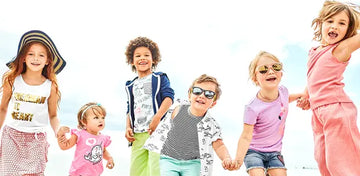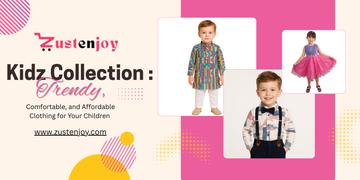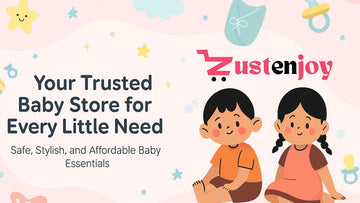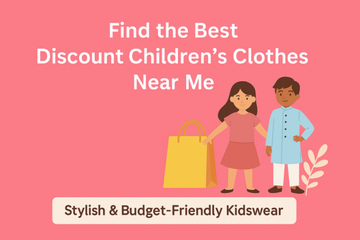Choosing clothes for kids is about more than just fashion—it's about finding that perfect balance of comfort, durability, safety, and self-expression. With so many options out there, knowing how to pick the right wardrobe for your child can feel overwhelming.
Whether you’re a new parent or shopping for growing children, this guide will help you make smart decisions when buying the best clothes for kids—across seasons and styles.
Why Choosing the Right Clothes for Kids Matters
Comfort boosts confidence: Kids are happiest when they feel good in their clothes. Uncomfortable fabrics or poor fits can impact how they play, learn, and interact.
Durability saves money: Investing in well-made pieces means fewer replacements and more savings over time—especially with active children.
Safety is non-negotiable: Clothes with loose buttons, poor stitching, or low-quality materials may pose risks. Quality kidswear prioritizes safe construction.
What Makes Clothes “The Best” for Kids?
1. Breathable, natural fabrics: Choose cotton, bamboo, or organic blends for softness and comfort. These materials are gentle on sensitive skin and allow temperature regulation.
2. Functional, growth-friendly fit: Look for adjustable waistbands, stretchable fabrics, and designs that allow movement without excess bagginess.
3. Timeless and versatile style: Select neutral colors, simple prints, and classic cuts that mix and match easily. Avoid overly trendy designs that won’t last.
4. Reinforced construction: Clothes should have double stitching at the knees, elbows, and seams to withstand active play and frequent washes.
Smart Shopping Tips and Seasonal Essentials
Spring: Lightweight layers like cotton tees, leggings, and jackets are ideal for shifting temperatures. Choose floral or pastel colors.
Summer: Sleeveless tops, shorts, and wide-brimmed hats made of breathable materials help kids stay cool. Light colors reflect sunlight.
Autumn: Add soft sweaters, canvas shoes, and denim jackets in warm tones like mustard or burgundy.
Winter: Layer thermals under fleece-lined pants and padded coats. Waterproof boots and accessories like gloves are essential.
Wardrobe must-haves:
- Soft cotton t-shirts
- Stretchable joggers or leggings
- Zip-up hoodies with deep pockets
- Durable denim or overalls
- Pull-on cotton dresses
- Statement outerwear pieces
- Breathable, safety-certified sleepwear
Affordable doesn’t mean low quality: Shop smart by buying multipacks, exploring seasonal sales, or supporting small local brands with ethical production standards.
Capsule wardrobes: Build a mix-and-match set of tops and bottoms that reduces clutter and ensures every piece gets worn.
Fit matters more than size: Always choose clothes that fit well instead of buying oversized pieces that can hinder movement.
Check care labels: Opt for machine-washable items and avoid anything needing special care—kidswear should be easy to maintain.
Let kids choose: Give them a say in selecting colors or prints from your curated options. This fosters independence and ensures they like what they wear.
Sustainability and Final Thoughts
Sustainable kidswear is not just a trend—it’s a responsibility. Choose brands that use organic cotton, recycled materials, or have take-back programs. It’s better for your child’s health and the planet.
Look for certifications like GOTS, OEKO-TEX, and fair labor guarantees. Supporting brands that value ethics helps build a better future for your child and others.
Ultimately, choosing the best clothes for kids is about supporting their lifestyle, safety, and individuality. Whether they’re climbing trees, painting walls, or reading books, let their clothes reflect comfort and confidence.
Frequently Asked Questions (FAQs)
Q1. How often should I buy new clothes for my child?
A: Every 3–6 months is common, especially during growth spurts. Monitor tight fits or worn areas.
Q2. Are organic clothes better for kids?
A: Yes. Organic materials are chemical-free, softer on sensitive skin, and more environmentally friendly.
Q3. What’s a versatile item for all seasons?
A: A neutral-colored hoodie or joggers. These can be layered or worn solo, making them season-friendly.
Q4. Should I buy clothes in larger sizes?
A: Slightly larger sizes work for seasonal outerwear. For everyday clothing, a snug fit is better for comfort and mobility.
Q5. How can I tell if a brand offers quality kidswear?
A: Look for certifications, stitching quality, customer reviews, and return policies. Check for transparency in sourcing and production.






